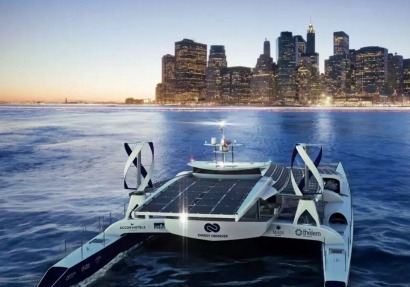
When the former multi-hull racing boat leaves Brittany next month it will be powered solely by renewable energy produced by onboard solar panels, wind turbines, and hydrogen produced from electrolysis of ocean water.
While all of those features are exciting to the renewable energy community, it is the electrolysis system which is generating the most buzz as the vessel's crew wraps up the final preparations for the voyage in a shipyard in Saint-Malo, a coastal city in Brittany, in northwest France.
The system created at the CEA Liten research institute is designed to split water into hydrogen and oxygen and then store the hydrogen, and that makes Energy Observer the world's first boat equipped with an autonomous means of producing hydrogen.
The lessons learned during the six-year circumnavigation by the €5 million ($5.25 million) vessel could help revolutionize renewable energy storage.
Energy Observer will make its first stop in Paris, and then make another 100 port calls in 50 countries between this year and 2022.
But this won't be the vessel's first time around the globe. Originally built to compete in open-sea sailing races, it won the Jules Verne trophy in 1994 for just such a voyage. The difference is that back then it relied solely on traditional energy sources.
The renewable energy retrofit was the brainchild of Victorien Erussard and Frederic Dahirel. A filmmaker, Jerome Delafosse, is also backing the project.
Photograph courtesy the Energy Observer website.
For additional information:

